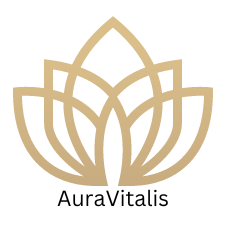
So, you’ve decided to take the plunge into wellness? First of all, yay! Starting a wellness journey is an incredible, transformative step towards a healthier, happier you. But I get it—taking that first step can feel overwhelming. There’s so much information out there, and everyone has an opinion on what’s best for you. But here’s the thing: this is your journey. No one else’s. I’m here to guide you through the basics of how to start a wellness journey for beginners—keeping it simple, approachable, and, most importantly, tailored to you.
I still remember the day I decided to prioritize my wellness. I was feeling sluggish, both physically and mentally. I was tired of the constant cycle of setting unrealistic goals, burning out, and feeling guilty. Sound familiar? The key to breaking that cycle is finding what feels good for you and building from there, step by step. Let’s dive in!
Start Where You Are (Not Where You Think You Should Be)
The most important advice I can give anyone starting a wellness journey is to start exactly where you are. Forget about where you think you should be, or what the latest Instagram influencer is doing. This is about you—your body, your mind, and your lifestyle. There’s no right or wrong way to do this, and there’s no race to the finish line.
Assess Your Current Lifestyle
Before diving into meal plans, workouts, or meditation apps, take a good look at your current lifestyle. What’s your routine like? How much time do you spend sitting? How often do you move your body? What does your typical meal look like? Jot these things down. Having a clear picture of your starting point will help you set realistic and achievable goals.
When I first started, I realized I was living off coffee and whatever snack I could grab between meetings. Exercise? Well, that was for “future me.” But the simple act of noticing what I was currently doing made a world of difference when setting my wellness intentions.
Set Small, Achievable Goals
There’s nothing wrong with having big, ambitious goals like running a marathon or eating only whole foods for a month, but if you’re just beginning, those kinds of goals can set you up for frustration. Instead, start with small, achievable actions that fit into your current lifestyle.
For example:
- Instead of “I’m going to work out for an hour every day,” try, “I’ll move my body for 10 minutes a day.”
- Instead of “I’m cutting out all sugar,” start with “I’ll add one more serving of veggies to my meals.”
These small shifts are what create lasting change. When I first started, my “workout” was 5 minutes of stretching in the morning. It seemed so small at the time, but over the weeks, those 5 minutes turned into 10, then 20. The key is to build on those small wins. That’s how momentum works!
Make Movement a Joy, Not a Chore
Exercise is often the first thing people think of when starting a wellness journey, but here’s the deal: movement should feel good. If you hate running, don’t run. If yoga bores you, try dancing, hiking, or swimming instead. The best exercise is the one you enjoy and can see yourself doing regularly.
In the early days of my own wellness journey, I tried following all the workout plans I thought I should do. Spoiler alert: I didn’t stick with any of them. But once I found the activities that brought me joy—like going for long walks or practicing yoga—I started looking forward to movement instead of dreading it.
Ideas to Get You Moving
- Yoga: Start with beginner-friendly flows (I recommend a YouTube search for “gentle yoga for beginners”).
- Walking: A simple walk around the block can do wonders for your mind and body.
- Dance: Put on your favorite song and dance like no one’s watching—it’s both exercise and therapy!
- Strength Training: Begin with bodyweight exercises like squats or push-ups, no equipment needed.
Remember, there’s no one-size-fits-all when it comes to movement. Explore different types of physical activities and stick with the ones that make you feel alive.
Nourish Your Body—Don’t Punish It
Now let’s talk about food. Diet culture has done a number on our relationships with eating, so here’s your permission to ditch the diets. Wellness isn’t about deprivation; it’s about nourishing your body with foods that make you feel good, inside and out.
Focus on Addition, Not Subtraction
Instead of focusing on what you can’t have, focus on what you can add. Start by adding more whole foods—veggies, fruits, lean proteins, and healthy fats—into your meals. You don’t need to overhaul your entire diet overnight. Simply swap a soda for water, or add some greens to your dinner. Small, manageable changes go a long way.
I used to think that wellness meant giving up all the foods I loved. But here’s the thing: wellness is sustainable when it’s balanced. I still enjoy pizza and ice cream, but I’ve learned to balance them with nutrient-dense foods that fuel my body.
Tune Into Your Body’s Signals
One of the most profound shifts you can make on your wellness journey is learning to listen to your body. How does it feel after certain meals? When are you truly hungry, and when are you eating out of habit? This mindful approach to eating can help you create a healthy, balanced relationship with food.
Prioritize Rest and Mental Wellness
When people ask how to start a wellness journey for beginners, they often focus on diet and exercise—but rest and mental health are just as important. Wellness is about balance in all areas of life, and that includes giving your mind and body the rest they need.
Get Enough Sleep
You’d be surprised how much sleep impacts every aspect of your wellness. Aim for 7-9 hours of quality sleep per night. Set a bedtime routine, dim the lights, and put away the screens at least 30 minutes before bed. Trust me, your body will thank you.
Practice Mindfulness or Meditation
Mental wellness is often overlooked, but it’s a crucial part of the wellness puzzle. Meditation, journaling, or simply practicing mindfulness in your daily life can help reduce stress and boost your overall well-being. Start small with just 5 minutes of deep breathing in the morning or before bed.
For me, mindfulness has become a non-negotiable part of my day. On the days I skip it, I notice I’m more reactive, less focused, and generally out of sync. It doesn’t have to be complicated—just a few moments of stillness can make a huge difference.
Consistency Over Perfection
Here’s the secret to success: consistency beats perfection. Don’t get caught up in trying to do everything perfectly. There will be days when you skip a workout, eat a less-than-ideal meal, or feel unmotivated. That’s normal! The important thing is to keep showing up for yourself, one small step at a time.
If you slip up, don’t sweat it—just get back on track the next day. Remember, wellness is a lifelong journey, not a destination.
Conclusion: Your Journey, Your Way
As you embark on your wellness journey, remember that this is all about you. There’s no magic formula or one-size-fits-all plan, and that’s the beauty of it. By starting small, moving joyfully, nourishing your body, and prioritizing rest, you’re building a foundation for lasting change.
So, how to start a wellness journey for beginners? Start with you, listen to your body, and embrace the process. It’s not about being perfect; it’s about finding what feels good and sustainable. Be kind to yourself, and enjoy the ride—you’ve got this!
